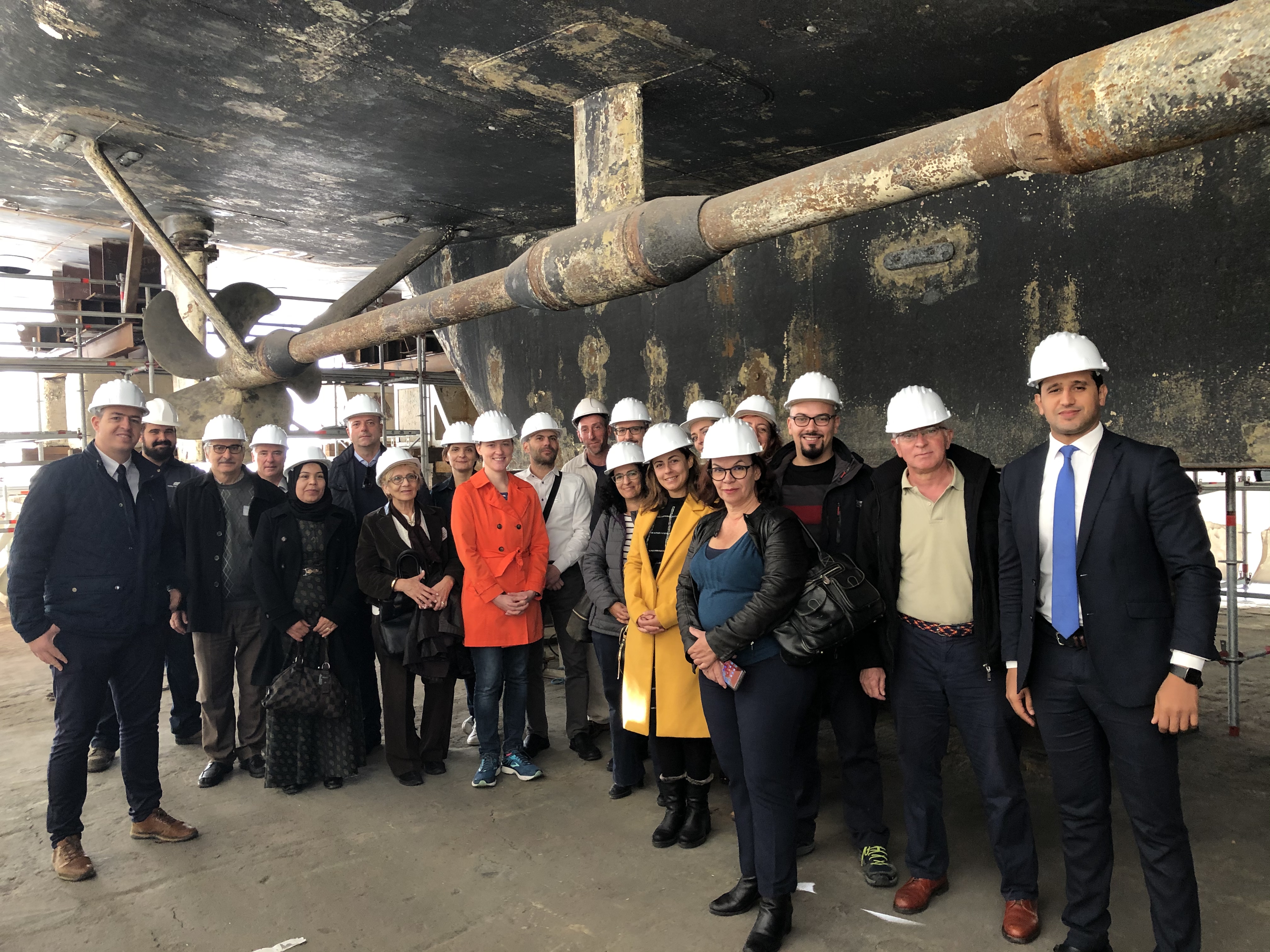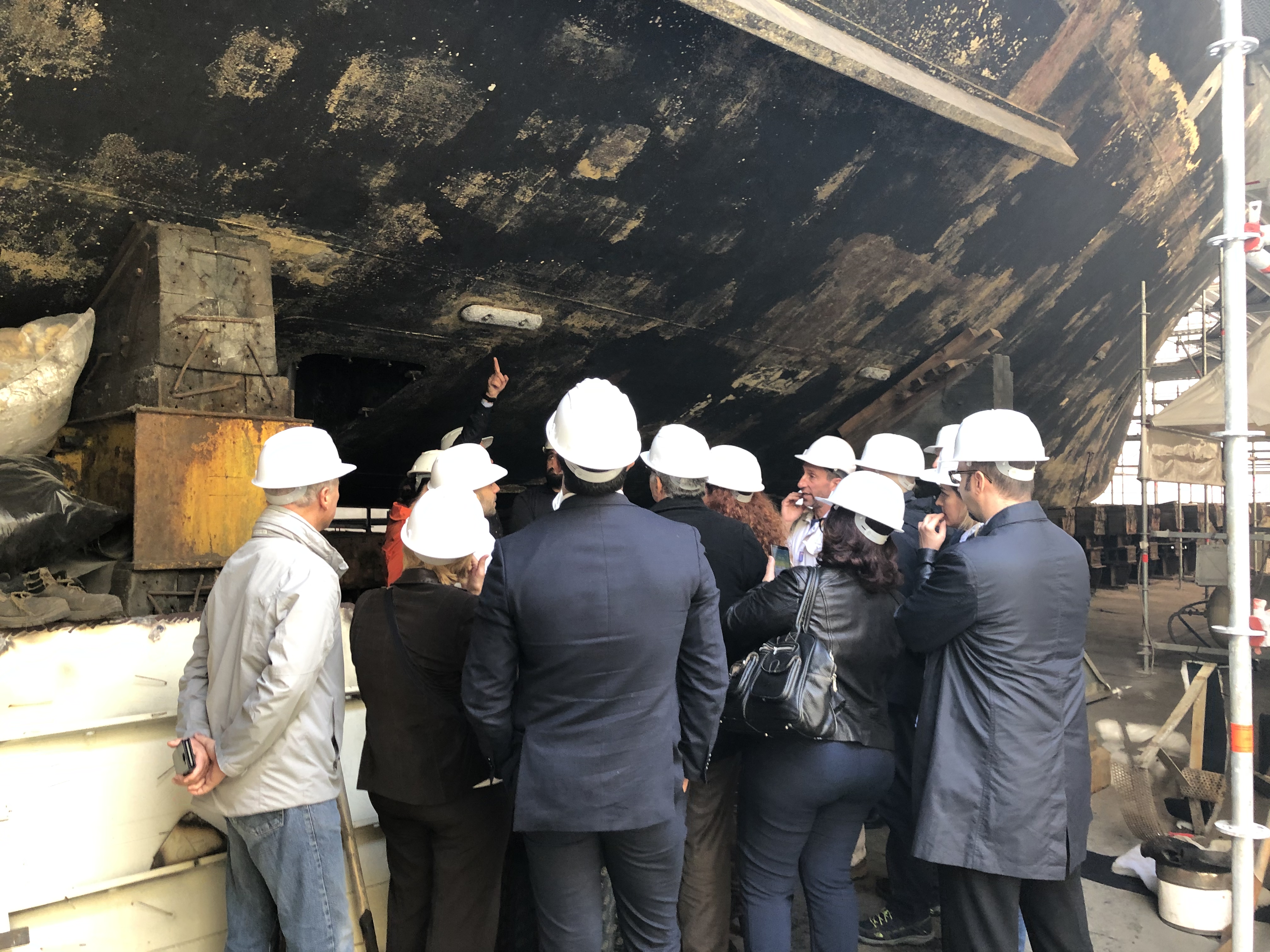Biofouling
The 2023 Guidelines for the control and management of ships' biofouling to minimize the transfer of invasive aquatic species (Biofouling Guidelines) (resolution MEPC.378(80)) are intended to provide a globally consistent approach to the management of biofouling, which is the accumulation of various aquatic organisms on ships’ hulls. The Biofouling Guidelines were originally adopted by the Marine Environment Protection Committee (MEPC) at its sixty-second session in July 2011 and were the result of three years of consultation between IMO Member States; following a thorough review that also took three years, the revised Guidelines were adopted by the MEPC at its eightieth session in July 2023. The Biofouling Guidelines represent a decisive step towards reducing the transfer of invasive aquatic species by ships.
Invasive aquatic species
The introduction of invasive aquatic species to new environments by ships has been identified as a major threat to the world’s oceans and to the conservation of biodiversity. A multitude of marine species, carried either in ships’ ballast water or on ships’ hulls, may survive to establish a reproductive population in the host environment, becoming invasive, out-competing native species and multiplying into pest proportions.
The extent of the problem of invasive species on ships’ underwater surfaces is largely due to the expanded trade and traffic volumes over the last several decades and, since the volumes of seaborne trade continue to increase, the problem may not have reached its peak yet if left unaddressed. The effects in many areas of the world have been devastating; quantitative data show that bio-invasions are continuing at an alarming rate and new areas are being invaded all the time.

The spread of invasive species is recognized as one of the greatest threats to the ecological and the economic well being of the planet, and one of the main drivers of biodiversity loss. These species are causing enormous damage to biodiversity and the valuable natural riches of the earth upon which we depend. Direct and indirect health effects are becoming increasingly serious and the damage to the environment is often irreversible. Moreover, significant economic impact occurs to industries that depend on the coastal and marine environment, such as tourism, aquaculture and fisheries, as well as costly damage to infrastructure.
Biofouling as a vector for the transfer of invasive aquatic species by ships
Invasive aquatic species are introduced to new environments by ships mainly through ballast water or hull fouling.

While ballast water is essential for safe and efficient modern shipping operations, the multitude of
marine species carried in it may pose serious ecological, economic and health problems. These include bacteria, microbes, small invertebrates, algae, eggs, cysts and larvae of various species.
Biofouling is also considered one of the main vectors for bioinvasions and is described as the undesirable accumulation of microorganisms, plants, algae and animals on submerged structures (especially ships’ underwater surfaces). Studies have shown that biofouling can be a significant vector for the transfer of invasive aquatic species. Biofouling on ships entering the waters of States may result in the establishment of invasive aquatic species which may pose threats to human, animal and plant life, economic and cultural activities and the aquatic environment.
The potential for invasive aquatic species transferred through biofouling to cause harm has been recognized by the IMO, the Convention on Biological Diversity (CBD), and several regional organizations for the protection of the marine environment. 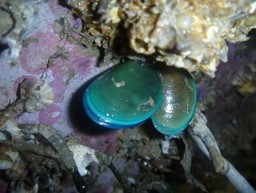
Related international regulatory framework
Preventing the transfer of invasive species and coordinating a timely and effective response to invasions requires cooperation and collaboration among governments, economic sectors, non-governmental organizations and international treaty organizations; the UN Convention on the Law of the Sea (UNCLOS) provides the global framework by requiring States to work together “to prevent, reduce and control human caused pollution of the marine environment, including the intentional or accidental introduction of harmful or alien species to a particular part of the marine environment.”
IMO has been at the forefront of the international effort by taking the lead in addressing the transfer of invasive aquatic species through shipping.
With the adoption of the
International Convention for the Control and Management of Ships' Ballast Water and Sediments, 2004 (BWM Convention), IMO Member States made a clear commitment to minimizing the transfer of invasive aquatic species by shipping, specifically through
ballast water.
On the other hand, while the International Convention on the Control of Harmful Anti-Fouling Systems on Ships, 2001 (AFS Convention) addresses anti-fouling systems on ships, its focus is on the prevention of adverse impacts from the use of anti-fouling systems and the biocides they may contain, rather than the prevention of the transfer of invasive aquatic species through hull fouling.
The Biofouling Guidelines
The issue of the transfer of invasive aquatic species through ships’ biofouling was first brought formally to IMO’s attention in 2006 and in the following year MEPC agreed to task the Sub-Committee on Bulk Liquids and Gases (BLG) with the development of related guidelines. The ensuing deliberations over successive BLG sessions culminated in the preparation of the Biofouling Guidelines, which were adopted by MEPC in 2011.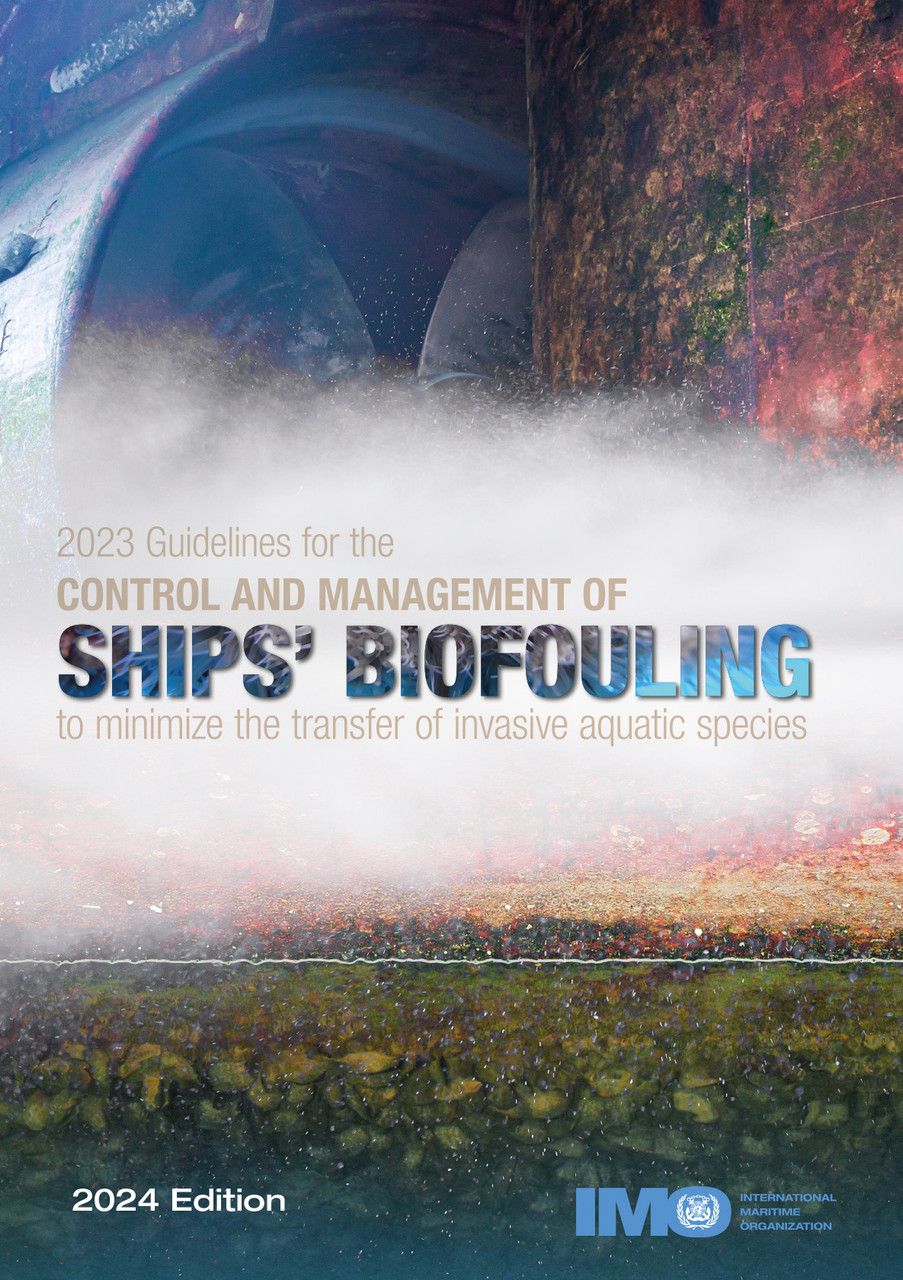
The Guidelines were further supplemented by the Guidance for minimizing the transfer of invasive aquatic species as biofouling (hull fouling) for recreational craft, approved by MEPC at its sixty-fourth session in October 2012 and circulated as MEPC.1/Circ.792. This Guidance is for use by all owners and operators of recreational craft less than 24 metres in length, which may constitute an important vector for the transfer of invasive aquatic species due to their large numbers and their operating profile that may make them particularly susceptible to biofouling as well as more likely to access remote areas.
It was agreed that, as scientific and technological advances are made, the Biofouling Guidelines may be refined to enable the risk to be more adequately addressed. Port States, flag States, coastal States and other parties that can assist in mitigating the problems associated with biofouling should exercise due diligence to implement the Guidelines to the maximum extent possible, which can play a significant role in reducing the risk of the transfer of invasive aquatic species.
In support of this review process, IMO has prepared the Guidance for evaluating the 2011 Guidelines for the control and management of ships' biofouling to minimize the transfer of invasive aquatic species, approved by MEPC at its sixty-fifth session in May 2013 and circulated as MEPC.1/Circ.811. This Guidance is provided to assist Member States and observers who wish to collect information needed to undertake reviews of the Biofouling Guidelines and to do this in a more consistent way. The Guidance identifies the types of performance measures that could help to assist in evaluating the different recommendations in the Guidelines. At its seventy-second session in April 2018, MEPC agreed to a new output for the Sub-Committee on Pollution Prevention and Response (PPR) to review the Biofouling Guidelines, based on the principles of the Guidance. After the initial review, the IMO Member States agreed to proceed with a revision of the Biofouling Guidelines. This revision, which aimed at improving the uptake and effectiveness of the Guidelines, was completed in 2023 and the MEPC, at its eightieth session (July 2023), adopted the revised Biofouling Guidelines as mentioned above.

In-water cleaning is an important measure to remove biofouling from the hull and niche areas, but may physically damage the anti-fouling coatings, shorten coating service lifetime and release harmful waste substances and invasive aquatic species into the environment. Recognizing this, to support the global availability of safe and environmentally responsible in-water cleaning services so as to support the universal application of the 2023 Biofouling Guidelines, the MEPC, at its eighty-third session (April 2025) approved the Guidance on in-water cleaning of ships' biofouling (MEPC.1/Circ.918).
Development of a legally binding framework for the control and management of ships' biofouling
At the same session the MEPC also approved a new output to develop a legally binding framework for the control and management of ships' biofouling to minimize the transfer of invasive aquatic species. The development of mandatory requirements will shift biofouling management from voluntary guidelines to enforceable international regulations and provide greater legal certainty in managing biofouling risks. The new output was assigned to the PPR Sub-Committee as the associated organ, with four sessions needed to complete the item; based on this, by the eighty-ninth session of the MEPC (mid-2029) the PPR Sub-Committee would provide a finalized draft legal framework and recommendations on the way forward.
The MEPC approved, in principle, the draft terms of references for this output, subject to refinement by the PPR Sub-Committee, as follows: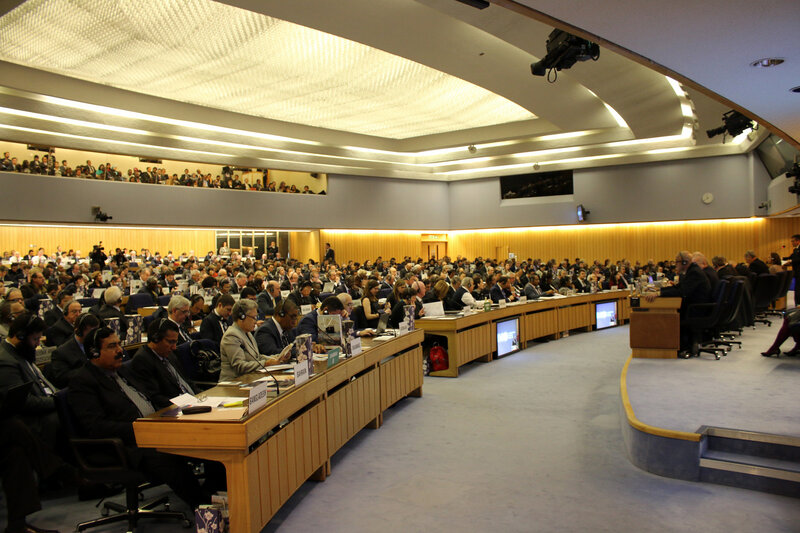
- consider appropriate provisions for testing, verification, surveys, certification, inspections, documentation, record-keeping, and enforcement as appropriate;
- consider and develop draft guidelines needed by the legally binding framework;
- take into account international law such as UNCLOS and other international agreements;
- take into account and address, as appropriate, potential release of hazardous materials and microplastics; and
- take into account implications for reduction of air pollution, greenhouse gas emissions and underwater radiated noise, if any.
Ship fouling and its management
All ships have some degree of biofouling, even those which may have been recently cleaned or had a new application of an anti-fouling system. Studies have shown that the biofouling process begins within the first few hours of a ship's immersion in water. The biofouling that may be found on a ship is influenced by a range of factors, such as:
design and construction, particularly the number, location and design of niche areas (e.g. sea chests, bow thrusters, hull appendages and protrusions, etc.);
specific operating profiles, including parameters such as operating speeds, ratio of time underway compared with time alongside, moored or at anchor, and where the ship is located when not in use (e.g. open anchorage or estuarine port);
places visited and trading routes (e.g. depending on water temperature and salinity, abundance of fouling organisms, etc.); and
maintenance history, including the type, age and condition of any anti-fouling coating, installation and operation of anti-fouling systems and dry-docking/slipping and hull cleaning practices.
Implementing practices to control and manage biofouling can greatly assist in reducing the risk of the transfer of invasive aquatic species.
Additional benefits from managing biofouling
Such management practices can also improve a ship's hydrodynamic performance, as hull fouling leads to significant increases in ship resistance, which in turn has a severe impact both on fuel costs and on emissions of air pollutants and greenhouse gases. Therefore, biofouling management can be an effective tool in enhancing energy efficiency and reducing air emissions from ships. This has been recognized by the IMO and is reflected in the 2024 Guidelines for the development of a Ship Energy Efficiency Management Plan (SEEMP) (resolution MEPC.395(82)). 
In addition, biofouling management, in particular on ship hulls and propellers, can have a beneficial contribution to the reduction of underwater radiated noise from ships. This interaction has also been recognized by the IMO as reflected in the Revised guidelines for the reduction of underwater radiated noise from shipping to address adverse impacts on marine life (MEPC.1/Circ.906/Rev.1).
Capacity-building
To support the implementation of the Biofouling Guidelines, the IMO Secretariat is implementing technical cooperation activities under its Integrated Technical Co-operation Programme (ITCP) focusing on the issue of biofouling and the Biofouling Guidelines. The aims of these activities are, on the one hand, to raise awareness of the aspects and implications of the transfer of invasive aquatic species through ships’ hull fouling and, on the other hand, to enhance the familiarity and understanding of the Guidelines in order to facilitate their global implementation and the minimization of species invasions. In addition, IMO has implemented the GloFouling Partnerships project since 2018 with project completion in mid-2025. This project aims to build capacity in developing countries to implement the Biofouling Guidelines and protect marine ecosystems, and is complemented by the TEST-Biofouling project which runs until 2026 and focuses on showcasing effective approaches to biofouling management by means of demonstration activities.
